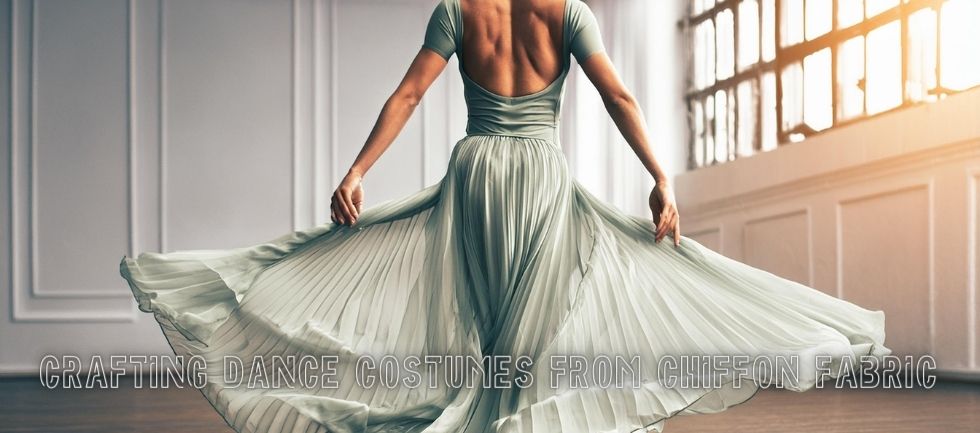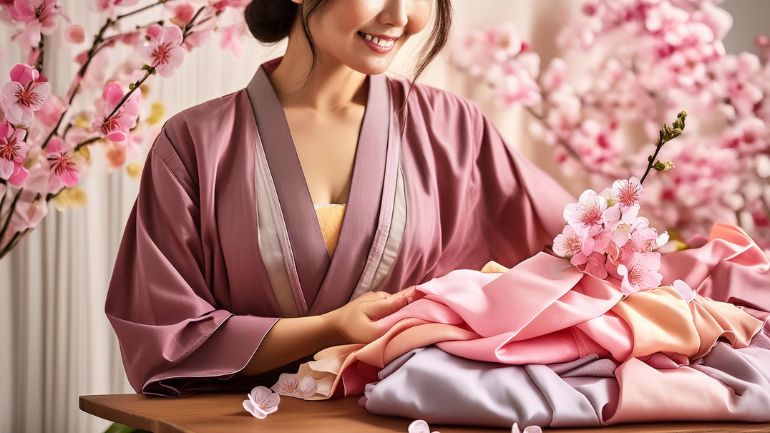Dance costumes are more than just clothing; they are an extension of a dancer's expression, enhancing the visual storytelling of a performance. Among the various fabrics used, chiffon stands out for its elegance, lightness, and flow. This semi-transparent, sheer fabric moves gracefully with the dancer, creating a mesmerizing effect on stage.
Crafting with Chiffon: Beauty Meets Challenge
Chiffon's delicate nature and beautiful drape make it a favorite choice for ballet, contemporary, and ballroom dance costumes. However, working with chiffon can be challenging due to its slippery texture and tendency to fray. This guide will equip you with the knowledge and techniques to transform this delicate fabric into a stunning dance costume!
What is Chiffon?
Chiffon is a lightweight, sheer fabric typically made from silk, nylon, polyester, or rayon. Its delicate, airy texture makes it a popular choice for evening wear, scarves, and, of course, dance costumes. The fabric's name is derived from the French word "chiffe," meaning a cloth or rag, but don't let the name fool you—chiffon is elegant and sophisticated.
Characteristics of Chiffon:
- Sheerness: Provides a soft, ethereal look.
- Lightweight: Ideal for dance due to its fluidity.
- Wrinkle-Resistant: Synthetic chiffons are less prone to wrinkling.
- Durability: Despite its delicate appearance, chiffon can be quite strong, especially synthetic varieties.
Gather Your Materials and Tools:
- Chiffon Fabric: Choose high-quality chiffon from reliable fabric stores.
- Lining Fabric: Depending on the design, you might need a lining for structure and opacity.
- Sewing Machine
- Sewing Needles and Pins: Use fine needles to avoid snags.
- Fabric Scissors or Rotary Cutter
- Thread (matching the chiffon color)
- Pattern Paper: You can create your own pattern or purchase one.
- Measuring Tape
- Iron and Ironing Board: Use a low heat setting to avoid damaging the fabric.
- Seam Ripper (for any mistakes)
- Decorations (Optional): Sequins, beads, lace, etc.
Design Inspiration: Unleashing Chiffon's Versatility
Ballet Costumes: Chiffon adds a romantic and ethereal quality to ballet attire. Tutus with chiffon overlays create soft, floating skirts that enhance the grace of ballet movements. Consider layering different shades of chiffon for a multi-dimensional effect. Bodices can also be adorned with chiffon ruffles or accents to complement the skirts.
Ballroom Dance Gowns: In ballroom dance, chiffon gowns flow beautifully during spins and turns, creating a dramatic visual effect. Design gowns with multiple chiffon layers to add volume and movement. Incorporate chiffon sleeves, capes, or scarves for added elegance. Rhinestones and sequins can be sewn onto chiffon to add sparkle and catch the stage lights.
Contemporary and Modern Dance: Chiffon is ideal for contemporary and modern dance costumes, where freedom of movement and expression are paramount. Loose, flowing garments made from chiffon allow dancers to move effortlessly. Experiment with asymmetrical designs, cutouts, and draping techniques to create unique and visually striking costumes. Combining chiffon with other fabrics like spandex or jersey can add texture and contrast.
Cultural and Traditional Dance Attire: Chiffon is also used in traditional dance costumes from various cultures. For example, in Indian classical dance, chiffon sarees and dupattas (scarves) add a touch of elegance and fluidity. In flamenco, chiffon ruffles on skirts enhance the dramatic flair of the dance. When designing cultural dance costumes, research traditional garment styles and incorporate chiffon in a way that respects and enhances the cultural significance.
Step-by-Step Guide: From Fabric to Flowing Masterpiece
Step 1: Select the Fabric
- Purchase high-quality chiffon that will withstand the rigors of dance movements. Silk chiffon is ideal for its durability and sheen, but polyester chiffon is a more affordable alternative that also works well.
- Always buy more fabric than your measurements require to account for draping, hemming, and any mistakes. A good rule of thumb is to purchase an extra yard beyond what your measurements dictate.
- In addition to chiffon, you'll need matching thread, zippers or closures, interfacing for stability in certain areas, and decorations like sequins or beads if desired.
Step 2: Preparing the Fabric
- Chiffon can shrink, so it's a good idea to pre-wash your fabric in the manner you will wash the finished garment. This step prevents future alterations in size and fit.
- Use a low heat setting and perhaps a pressing cloth to iron your chiffon, as it can melt or become misshapen under too much heat.
- Use a large, flat surface to lay out your fabric. Chiffon is slippery, so use pattern weights instead of pins to avoid damaging the fabric.
Step 3: Cut and Sew
- Use sharp scissors or a rotary cutter for clean cuts. Cut one layer at a time to ensure accuracy.
- Use a fine needle and a longer stitch length to avoid puckering the delicate fabric. French seams are ideal for chiffon, as they encase the raw edges and provide a neat, professional finish.
- Be gentle with chiffon throughout the sewing process to avoid tears and stretches.
Step 4: Assemble the Costume
- Assemble the main pieces of your costume first, such as the bodice and skirt. Ensure that all seams are secure and the fit is correct.
- Sew on any sleeves or additional design elements. For designs that require more structure, consider adding a lining or an underlayer of a sturdier fabric.
- Regularly fit the costume on the dancer throughout the assembly process. Adjustments are easier to make before the costume is fully finished.
Step 5: Final Touches
- Hem the edges of your chiffon, using a rolled hem for the lightest, most invisible seam. This gives the garment a professional-looking finish.
- Apply any final decorations like sequins, beads, or crystals. Make sure these are securely attached and will not come loose during movement.
- Have a final fitting with the dancer to ensure the costume fits perfectly and is comfortable. Make any last adjustments.
Step 6: Decoration and Detailing (Optional)
- Add Embellishments: To enhance the visual impact of a chiffon dance costume, consider adding sequins, beads, or lace. Ensure that these embellishments are securely attached but minimal to maintain the fabric's lightweight nature.
- Apply Appliqués: Appliqués can add depth and texture to the costume. When applying appliqués on chiffon, use a lightweight adhesive and a gentle pressing technique to avoid fabric damage.
Step 7: Maintenance and Care
- Cleaning: Chiffon costumes should be gently hand-washed using a mild detergent or professionally dry-cleaned. Avoid wringing or twisting the fabric to prevent deformations.
- Storage: Store chiffon costumes in a cool, dry place away from direct sunlight. Use padded hangers to avoid creases and maintain the shape of the garment.
Conclusion
Creating a dance costume from chiffon requires a balance of artistic design and technical expertise. With the right approach and attention to detail, chiffon can be transformed into a stunning ensemble that flows beautifully with every dancer's move, embodying the spirit of the dance itself.



